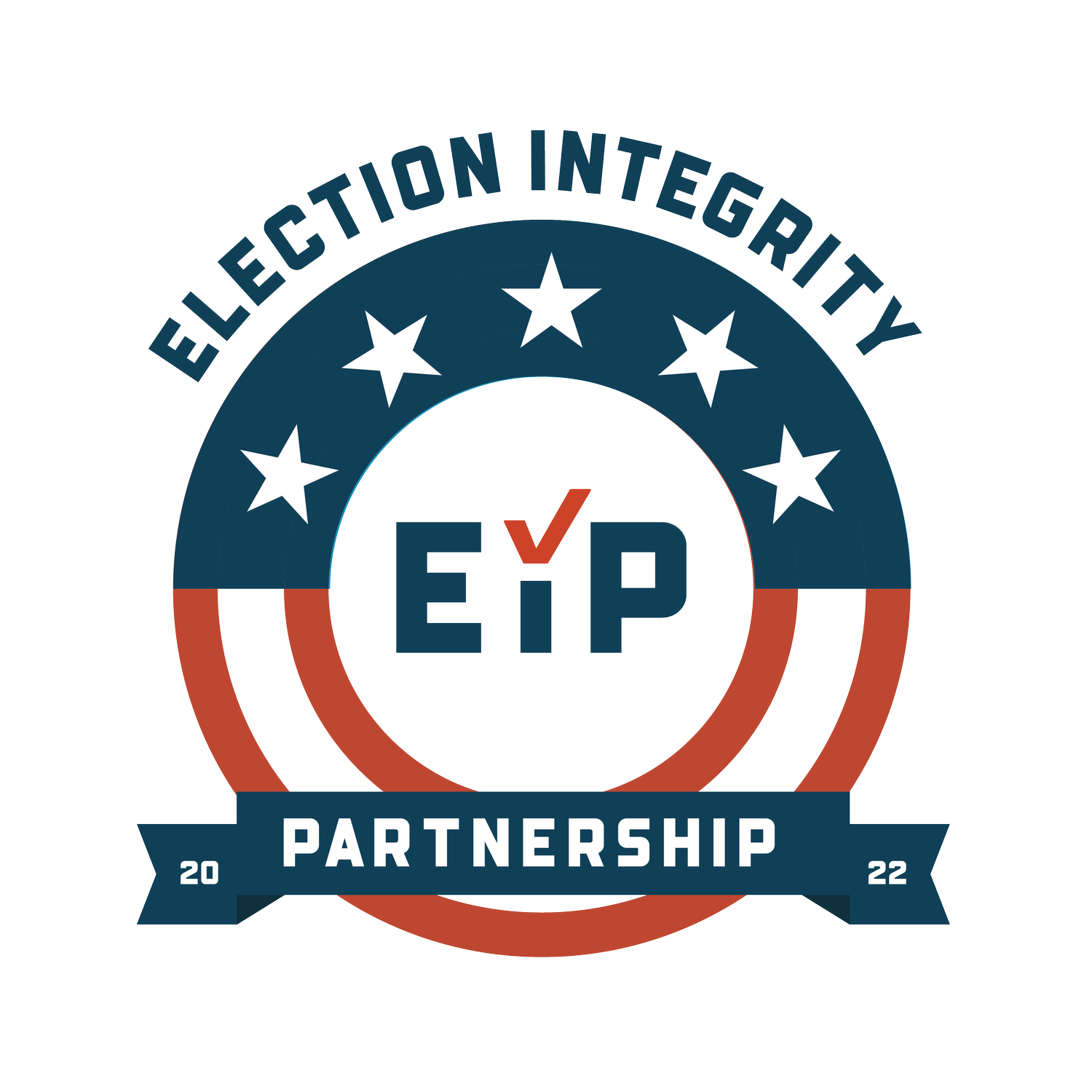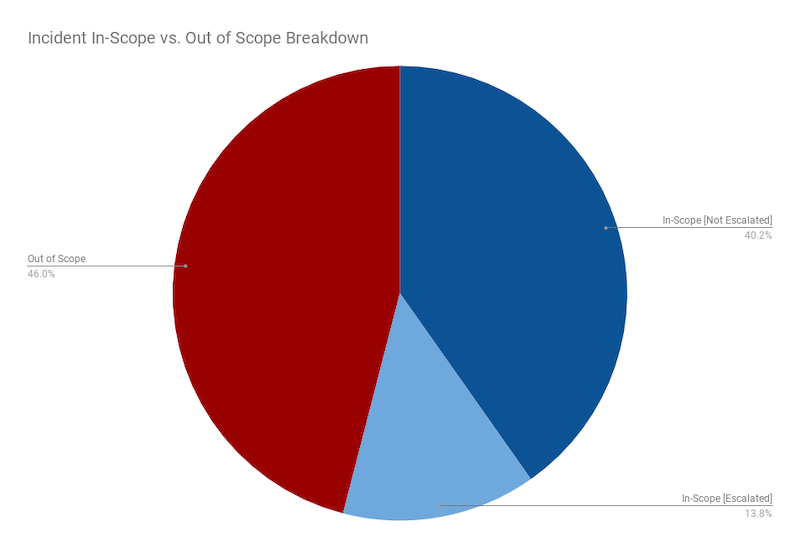Our First 2 Weeks at the Election Integrity Partnership
The Election Integrity Partnership brought together four organizations, all with extensive experience in the study of online disinformation, to provide real-time detection, analysis and mitigation of election-related misinformation and disinformation. After a summer of preparation, hiring and training, the EIP began its full operational schedule on Tuesday, Sept. 8. Since then, our team has been on-call 12 hours a day to both surface and respond to election-related mis- and disinformation incidents. Every few weeks, we will be posting a summary of our work to highlight major publications as well as notable narrative trends.
We responded to 87 unique incidents during our first two weeks of operation, 52% of which were surfaced internally by the partnership. An incident can contain multiple accounts or pieces of disinformation, but is generally focused on a specific narrative. Of these incidents, the team escalated 12 cases to our platform partners for further review and potential action. We noted clear platform action on nine of these escalated incidents. We expect to greatly increase our operational pace as our internal processes and tools have started to mature and as we onboard new external partners.
Key Takeaways
Creating an operational pace for the research process is a difficult task, but we are rapidly adapting our new model to deal with a large scale of reports as we near the election.
We have broken down our incoming incidents into several key narrative trends, described in detail below. Narratives attempting to undermine the accuracy of elections results have dominated our analysis.
The team has invested significant resources into our real time monitoring capabilities, which have surfaced the majority of our incidents to date. We will continue to expand these capabilities as we grow our archive of misleading posts and content.
We have received valuable input from our civil society partners, who have provided us with initial tips, and the platforms that have acted on our referrals.
Next 2 Weeks
We will be expanding our monitoring on smaller social media platforms to ensure we have good coverage and build a comprehensive understanding of content spread.
Having enhanced our ability to rapidly analyze reported content, the EIP is eager to work more closely with our civil society partners in the coming weeks. We are still accepting and onboarding more civil society organizations to this effort: please reachout.
Incident Breakdown
The EIP prioritizes rapid response to external reports from our trusted partners. Roughly half (48%) of our reports these first two weeks came from our civil society partners, and the rest of the investigated incidents were sourced internally. We expect even more of our investigated incidents to be internally detected in the coming weeks as we ramp up these detection efforts.
The Election Integrity Partnership has narrowly defined its target scope of election-related mis- and disinformation. Thus a report that has entered the EIP pipeline may be classified as out of scope if it does not fall within our designated election-related misinformation categories. Below, we give a breakdown of the 87 incidents we triaged in the first two weeks: of these, 40 incidents were deemed out of scope after an initial investigation, 35 were deemed in scope, and 12 were both in scope and escalated into full reports with our platform partners. Some incidents were in scope but were non-falsifiable, in-actionable, or did not violate platform terms of service. These incidents remain in the EIP’s ongoing monitoring processes and were not escalated to platform partners.
The breakdown of all incidents which the EIP team investigated. Incidents were defined in or out of scope based on the EIP’s first platform policy breakdown post.
The EIP works to investigate across a broad set of platforms for mis- and disinformation events. Below, we show the distribution of in-scope incidents across platforms. We do not view this as representative of the distribution of misinformation across platforms, but rather the ability of our team to use internal tooling for detection. Facebook and Twitter have the most available tooling and endpoints to conduct our investigations, which will continue to bolster the number of incidents which we find in these spaces. Most of our reports to the other platform teams are based on leads from the Facebook and Twitter content we’ve been able to surface. In the coming weeks, we are pushing to more proactively surface content which might start on what we refer to as “longtail” platforms, despite our tooling limitations.
In-scope incidents investigated by the EIP broken down by platform. This is not a representative graph of the distribution of misinformation across platforms, rather, it depicts the EIP’s focus areas thus far based on tooling capacity and external reporting patterns.
Finally, below we summarize nine observed narratives, to further describe the in-scope incidents that drove most of our research. The most prominent narratives were those that distorted the granular truth of new voting processes in many states. The narrative descriptions in the below table summarize the electoral mis- or disinformation messages in content analyzed by our researchers.
A breakdown of the most common narratives the EIP has seen within the first two weeks of operation.
Visual representation of the narrative breakdown among tickets that were deemed In-Scope for the EIP.
Publications
Policy Analysis
On Sept. 11, we updated our blogpost Evaluating Platform Election-Related Speech Policies to reflect significant updates to Facebook, Twitter and Pinterest’s election-related content policies. Notably, these new policies addressed EIP’s previously highlighted concern that content that delegitimizes election results is important to election integrity. Additionally, these three platforms have clarified their language around how these policies will be applied. All three now say they will either label or remove violating content. As enhanced platform policy is a central goal of the EIP, we hope that these changes serve as exemplars for other platforms seeking to better address electoral mis- and disinformation through their content policies..
Rapid Response
We have updated our website to include a new section featuring our Rapid Response work. We are already using this space to highlight our content analysis.
In these first two weeks we have published details on three Rapid Response incidents. Two of our investigations focused on Google Ad content, with one deep-dive analysis highlighting Google’s news organization exemption and how it has led to misleading headlines in political ads. The other investigated a specific ad that pushed unfounded claims of “massive voter fraud” in Florida.
We also spent time investigating a larger cross-platform incident highlighting confusion about absentee ballot request forms. The team found instances of the same video content on Twitter, TikTok, Reddit, Facebook, Tumblr, Instagram and YouTube over the past month. We were able to work closely with the Facebook and TikTok teams in particular to label or remove many of these instances.
Finally, the team looked into misinformation about the voting processes in California which was bolstered by follow-for-follow communities on Twitter. The content of these posts was very clear misinformation about voting procedures, which led to quick action involving both user takedowns as well as content labeling from the Twitter and Facebook teams we alerted.




